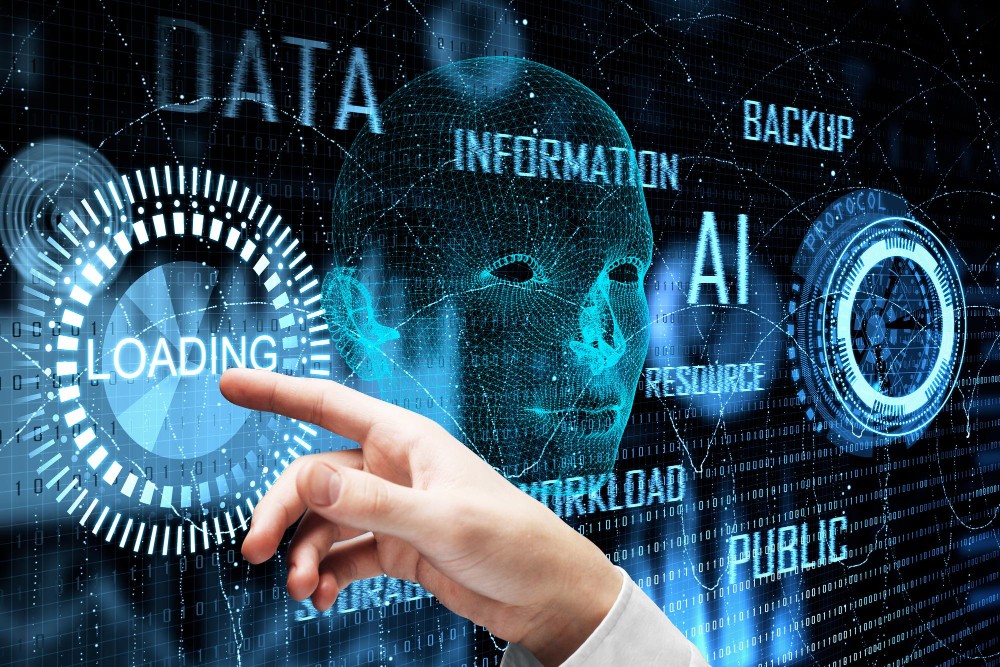AI and Big Data:
In today’s rapidly advancing digital world, artificial intelligence (AI) and big data have become two of the most powerful tools driving innovation across various industries. While both technologies individually hold immense potential, their convergence is creating unprecedented opportunities to harness the vast amounts of information generated daily. More than ever before, AI and big data are playing a critical role in improving decision-making, boosting efficiency, and driving economic growth. In this blog post, we will delve into how AI is unlocking the true potential of big data, the significant opportunities it presents, and the challenges we face as we harness the power of information.
Understanding Big Data and Its Role in the Digital Age
Before we explore how AI transforms big data, it’s crucial to understand what big data means. Simply put, big data consists of large, complex datasets generated at high speed, which traditional data processing tools cannot handle effectively. Various sources, including social media, sensors, devices, transactions, and digital communications, contribute to these datasets. In other words, big data encompasses the massive amount of information that organizations collect daily.
What makes big data so valuable is not just its sheer size but the insights it can provide when properly analyzed. With the right tools, businesses can sift through this data to uncover trends, patterns, and correlations that can inform decision-making. However, this is where AI comes into play—because handling such vast amounts of information manually is virtually impossible, AI algorithms are essential for extracting actionable insights from big data.

How AI is Transforming Big Data Analytics
One of the most significant ways AI is revolutionizing big data is through its ability to process and analyze vast datasets efficiently. Unlike traditional methods that rely on human intervention, AI can analyze data in real-time, allowing organizations to make faster and more accurate decisions. For example, AI-powered analytics tools can detect patterns in customer behavior, monitor market trends, and optimize supply chains—all in a fraction of the time it would take a human team.
Furthermore, AI enables predictive analytics, which allows businesses to forecast future outcomes based on historical data. By leveraging machine learning algorithms, AI can identify patterns in past data and use them to predict future trends, helping organizations make proactive decisions. For instance, retailers can predict which products will be in high demand during certain seasons, and financial institutions can forecast stock market trends to make smarter investment decisions.
In addition to predictive analytics, AI is transforming big data through natural language processing (NLP) and sentiment analysis. As big data includes a vast amount of unstructured information, such as text, images, and social media posts, AI’s ability to understand and interpret human language is invaluable. With NLP, AI can analyze customer reviews, social media comments, and feedback to gauge public sentiment toward a product, service, or brand. This enables companies to gain deeper insights into consumer preferences and behaviors, allowing them to fine-tune their strategies accordingly.
Key Opportunities: AI and Big Data in Different Industries
Now that we understand how AI enhances big data analytics, let’s explore some of the key opportunities AI and big data present across various industries.
1. Healthcare
First and foremost, AI and big data are having a profound impact on healthcare. By analyzing massive amounts of patient data, AI is enabling healthcare professionals to deliver more personalized and efficient care. For example, AI can help doctors identify patterns in a patient’s medical history to predict future health issues, allowing for earlier interventions and more targeted treatments. In addition, AI-powered systems are being used to analyze medical images, such as MRIs and X-rays, helping radiologists detect abnormalities that may be missed by the human eye.
Moreover, big data analytics is driving advancements in precision medicine. By analyzing genetic data and patient profiles, AI can help researchers develop more precise and personalized treatment plans tailored to individual patients’ needs. As a result, healthcare outcomes are improving, and patients are receiving more targeted and effective care.

2. Retail and E-Commerce
In the world of retail, AI and big data are transforming the way businesses interact with customers. By analyzing data on customer preferences, purchase history, and online behavior, AI-powered recommendation engines are enabling retailers to offer personalized product suggestions. For example, platforms like Amazon and Netflix use AI to recommend products and shows based on past interactions, creating a more engaging and personalized experience for users.
Furthermore, AI is helping retailers optimize their supply chains by predicting demand for certain products. This means that businesses can reduce waste, improve inventory management, and ensure that products are always in stock when customers need them. In addition, AI-driven chatbots and virtual assistants are enhancing customer service by providing real-time support, answering queries, and processing orders, further streamlining the customer experience.
3. Finance
Another key area where AI and big data are making a significant impact is in the financial sector. Financial institutions are leveraging AI to detect fraudulent transactions, assess credit risk, and provide personalized financial advice. By analyzing customer transaction data, AI can identify unusual spending patterns that may indicate fraud, allowing banks to take preventive measures and protect their customers.
Moreover, AI is enabling the rise of robo-advisors, which use algorithms to provide automated financial advice and portfolio management. By analyzing market data, these AI-driven systems can help investors make smarter decisions, reduce risk, and optimize their returns. In addition, AI-powered trading algorithms are revolutionizing the stock market by making trades in real-time based on complex data analysis, leading to more efficient markets.
4. Manufacturing
In manufacturing, AI and big data are driving improvements in efficiency, quality, and innovation. By analyzing production data, AI can identify bottlenecks, predict equipment failures, and optimize workflows. For example, predictive maintenance powered by AI can help manufacturers anticipate when machines need repairs, reducing downtime and extending the lifespan of equipment.
Furthermore, AI is being used to optimize supply chains and reduce waste. By analyzing data from suppliers, logistics partners, and market trends, AI can predict demand fluctuations and adjust supply chain operations accordingly. This means that manufacturers can reduce excess inventory, lower costs, and improve overall efficiency.
Challenges in Harnessing the Power of AI and Big Data
While the potential of AI and big data is vast, there are significant challenges to overcome when it comes to harnessing this power. Perhaps one of the most pressing challenges is data privacy and security. As organizations collect vast amounts of data, there are growing concerns about how that data is used and protected. Ensuring compliance with data privacy regulations, such as the GDPR in Europe, is critical to building trust with consumers.
In addition to privacy concerns, the quality of data is another challenge. Big data is only as valuable as its accuracy and reliability. If the data being analyzed is incomplete, biased, or outdated, the insights generated by AI could lead to poor decision-making. Therefore, organizations must prioritize data quality and integrity when building AI-powered solutions.
Furthermore, there is the challenge of ensuring transparency in AI algorithms. As AI systems become more complex, it becomes increasingly difficult to understand how they reach their decisions. This lack of transparency, often referred to as the “black box” problem, can be problematic, especially in industries where accountability is essential, such as healthcare and finance. To address this challenge, organizations must develop explainable AI (XAI) solutions that allow for greater transparency and accountability.
The Future of AI and Big Data: What Lies Ahead?
Looking ahead, the future of AI and big data is full of exciting possibilities. As AI continues to evolve, we can expect to see even more sophisticated tools for analyzing and interpreting data. For instance, advancements in AI-driven deep learning algorithms are likely to improve the accuracy and speed of big data analysis, enabling businesses to uncover insights in real-time.
Moreover, the integration of AI and the Internet of Things (IoT) is set to transform industries such as transportation, smart cities, and agriculture. By analyzing data from IoT devices, AI can help optimize everything from traffic flow to energy consumption, creating smarter and more efficient systems.
In addition, the rise of quantum computing could revolutionize the way we process and analyze big data. While still in its early stages, quantum computing holds the potential to solve complex problems that are currently beyond the reach of classical computers, opening up new possibilities for AI and big data applications.

Conclusion: Harnessing the Power of Information
In conclusion, the convergence of AI and big data is reshaping industries and creating new opportunities to harness the power of information. From healthcare to finance, manufacturing to retail, AI-powered big data analytics is driving efficiency, improving decision-making, and unlocking new possibilities for innovation. However, as we continue to leverage these technologies, it is essential to address the challenges of data privacy, transparency, and quality to ensure that AI and big data are used responsibly and ethically.
As we move forward, the future of AI and big data is incredibly promising. By harnessing their potential, we can unlock new insights, improve operations, and drive economic growth in ways that were once unimaginable. The key lies in embracing the opportunities these technologies offer while remaining vigilant in addressing the challenges they present. Ultimately, the power of AI and big data lies not just in the information they generate, but in how we use that information to shape a better, more connected world.


Pingback: SaaS: IS THE BEST Software technology Transformation -
Hey mygodigi.com,
I was looking at your website and realized that despite having a good design; it was not ranking high on any of the Search Engines (Google, Yahoo & Bing) for most of the keywords related to your business.
We can place your website on Google’s 1st page.
? Top ranking on Google search!
? Improve website clicks and views!
? Increase Your Leads, clients & Revenue!
If you are interested, I will send you our SEO Packages and Cost.
Well wishes,
Greg Di Bruno
Senior Services Consultant – Let’s Get You Optimize
Email: info@letsgetuoptimize.com
Phone: 9497671355
If you don’t want me to contact you again about this, reply with “unsubscribe”